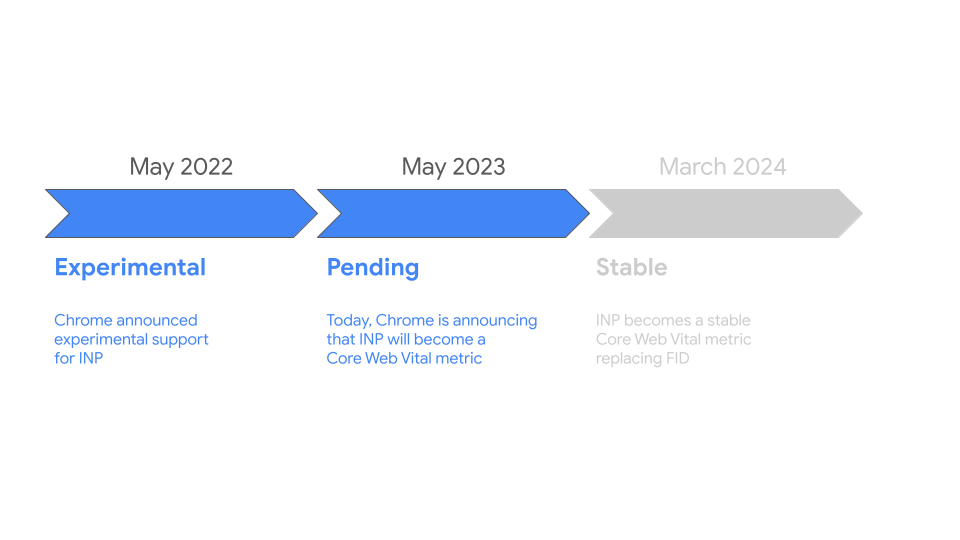What Is First Input Delay and How Does It Impact Marketing?
Do you want more traffic, more leads, and more sales? You can optimize your website performance regularly to facilitate search engine optimization (SEO) or a website redesign. An improved website design will increase your marketing performance, get you more traffic, higher conversion, and, ultimately, a better return on your efforts. One of the factors is First Input Delay.
 What is First Input Delay?
What is First Input Delay?
First Input Delay (FID) is a metric used to measure the responsiveness of a website. It is the time in milliseconds between when a user first interacts with a webpage (e.g., clicks a link or button) and when the browser is able to respond to that interaction.
FID is a crucial metric for web designers and an integral part of understanding your website performance. It reflects the user's perception of the website's loading speed and responsiveness to their interactions, a core aspect of the user experience. Impacting the user experience, FID is a critical part of SEO; it is one of the Core Web Vitals metrics and should be part of any SEO audit. Web designers must understand the impact of FID on user experience and conversion rates and optimize the website's performance to minimize FID and improve the overall user experience.
What is the Impact of First Input Delay?
To improve your website's performance and the resulting user experience, it is important to understand the impact FID can have on your marketing efforts and website performance.
-
A high FID can lead to a poor user experience, negatively impacting engagement and conversion rates. Users may become frustrated with slow-loading pages and leave your website before they even have a chance to explore what you offer. This can lead to lost revenue and a decrease in customer satisfaction.
-
On the other hand, a low FID can help ensure that users have a positive experience on your website, leading to increased engagement, conversion rates, and, ultimately, revenue. A website that loads quickly and responds to user input promptly is more likely to keep visitors engaged and encourage them to explore your products and services.
How well is your website performing? Grade your website and know in a minute:
So, what can you do to improve your website's FID and user experience? Here are a few tips:
-
Minimize the amount of code and resources needed to load a page: This can be achieved by removing unnecessary code, optimizing images and videos, and using a Content Delivery Network (CDN) to deliver content to users quickly.
-
Implement lazy loading: Lazy loading allows you to load only the resources needed for the user to see and interact with the page rather than loading all resources simultaneously. This can significantly improve FID and page load times.
-
Use a performance budget: A performance budget limits the resources and code used on a page, which can help you identify and eliminate unnecessary resources causing delays.
-
Optimize your JavaScript: Use techniques like code splitting, tree shaking, and minification to reduce the amount of JavaScript that needs to be loaded and executed.
-
Use browser caching: Browser caching allows a user's browser to store resources locally, so they don't have to be downloaded again on subsequent visits to the website, which can significantly improve FID.
-
Use a Performance monitoring tool: Use tools like Google Lighthouse or webpagetest.org to measure your website's performance and identify areas for improvement.
-
Consider implementing progressive web apps, which can load quickly and work offline.
By implementing these techniques, you can significantly improve FID and provide a better user experience for your website visitors.
Tools to use
There are many SEO tools and analytical platforms to improve First Input Delay (FID) on your website:
-
Google Lighthouse: Google Lighthouse is an open-source tool that allows you to audit the performance of your website, including FID. It provides detailed information on how to improve FID and overall performance.
-
webpagetest.org: webpagetest.org is a performance testing tool that provides detailed information on page load times, including FID. It also allows you to test your website from different locations and devices.
-
Chrome DevTools: Chrome DevTools is a built-in tool in the Chrome browser that allows you to inspect and debug your website's performance, including FID. It provides detailed information on how to improve FID and overall performance.
-
GTmetrix: GTmetrix is a website performance testing tool that provides detailed information on page load times, including FID. It also generates a report with recommendations on improving FID and overall performance.
-
SpeedCurve: SpeedCurve is a website performance monitoring tool that helps you understand how your website's performance changes over time. It provides detailed information on FID and other performance metrics and allows you to monitor performance from different locations and devices.
-
Calibre: Calibre is a free performance testing tool that allows you to test your website's load time, including FID. It also provides detailed information on how to improve FID and overall performance.
FID is a critical metric to consider when evaluating the performance of your website. By understanding the impact of FID on user experience and conversion rates, you can improve website performance and ultimately drive more revenue for your business.
This content is also available in:
- German: Was ist First Input Delay und wie wirkt es sich auf das Marketing aus?
- Spanish: ¿Qué es el First Input Delay y cómo afecta al marketing?
- French: Le First Input Delay (FID) : définition et impact marketing
- Italian: Il First Input Delay (FID): definizione e impatto marketing
- Romanian: First Input Delay (FID): definiție și impact în marketing
- Chinese: 什么是首次输入延迟及其对营销的影响?









Leave a Comment